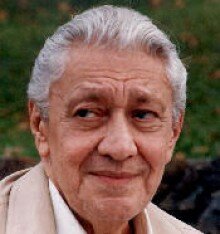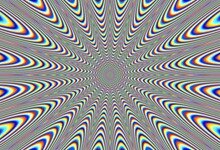
Novelist, poet and painter, Héctor Rojas Herazo was a towering figure in Colombian letters for several decades. He wrote three novels and five books of poetry. He won prizes for his two first novels and praise for his poetry from the likes of Gabriel García Márquez.
The greatest attraction of Rojas Herazo’s poetry is the capacity he had to name things and put them on an existential level of great power and vigor. His contemporary, the poet Fernando Charry Lara, identified strength as the fundamental feature of Rojas’ poetry. His first books were published in the fifties, a bit later than the initial books by the authors of the so-called Mito generation, which renewed poetics and, through the review of that name, gave the country a more cosmopolitan attitude.
In his first book, Rostro en la soledad (Face in solitude, 1952) the characteristics of his later work are already present: the hunches and intuitions, the great questions about man, solitude and death, about the ruins that establish, even before the existence of the house, its implacable destiny. These are also the recurrent themes of his narrative and pictorial work. On this tripod, Rojas Herazo mounts his vision of the world, of God and of a remote paradise glimpsed through certain cracks. García Márquez said that after reading this first book of poetry one was left “with the sensation of having chewed rubble, of having seen the defeat before our eyes of the strengths that were made adverse to man by original sin”.
In his third book of poetry, Desde la luz preguntan por nosotros (From the light they ask about us, 1952), a long and beautiful poem in honor of Walt Whitman stands out. With his next two books, he strengthened his standing as one of the clearest and most personal voices in Colombian poetry. He did not publish any further poems for more than two decades, but in 1995, with Las úlceras de Adán (Adam’s ulcer), he again focused on that bit of rebellious clay that is man, on the irremediable loss of the paradise of childhood, on the smells and flavors of the Tropics that eat away peoples and houses. In it, he also wrote a laconic epitaph: “I lived my death so much that now I dream/ to die of life in my bewildered bones”. He saw himself as living in a world of “ruined patios full of rotting junk, sea moans, lost lights”.
His fiction was important in the context of the Spanish language. There is no doubt that Respirando el verano (Breathing the summer) prefigured in 1962 the primeval world of Márquez’s One Hundred Years of Solitude. And his other two novels confirmed the talent of this creator who reveled in words and made of his preoccupation with humanity a constant question expressed in prose and poetry.
Poems
The house among the oaks
Summer
Desire
The gymnast
The clay chooses a man
That which is there, breathing
A lesson in innocence
Piero della Francesca
A hole
The friend
Bibliography
Poetry
In Spanish
Rostro en la soledad (Face in solitude). Antares, Bogotá 1952.
Tránsito de Caín (Cain’s transit). Eddy Torres, Bogotá 1953.
Desde la luz preguntan por nosotros (From the light they ask for us). Editorial Kelly, Bogotá 1956.
Agresión de las formas contra el angel (Aggression of the forms against the angel). Editorial Kelly, Bogotá 1961.
Fiction
In Spanish
Respirando el verano (Breathing the Summer). Ediciones Tercer Mundo, Bogotá 1962.
En noviembre llega el arzobispo (The archbishop arrives in November). Ediciones Lerner, Bogotá 1967.
Señales y garabatos del habitante (Signs and scribbles of the inhabitant). Colcultura, Bogotá 1976.
Celia se pudre (Celia rots). Ediciones Alfaguara, Madrid 1985.
Las úlceras de Adán (Adam’s ulcers). Editorial Norma, Bogotá 1995.
Journalism
In Spanish
Vigilia de las lámparas – Obra periodística 1940-1970, (Vigil of the lamps – Journalism 1940-1970). Fondo Editorial Universidad Eafit, Medellín 2003.
La magnitud de la ofrenda – Obra periodística 1940-1970 (The magnitude of tribute, journalism 1940-1970). Fondo Editorial Universidad Eafit, Medellín 2003.
Links
In Spanish
Digital library of the Universidad del Norte
Poems, manuscripts, pictures, photos, journalism.
Banco de la República
Interview.
Banco de la República
Interview with Jorge García Usta.


